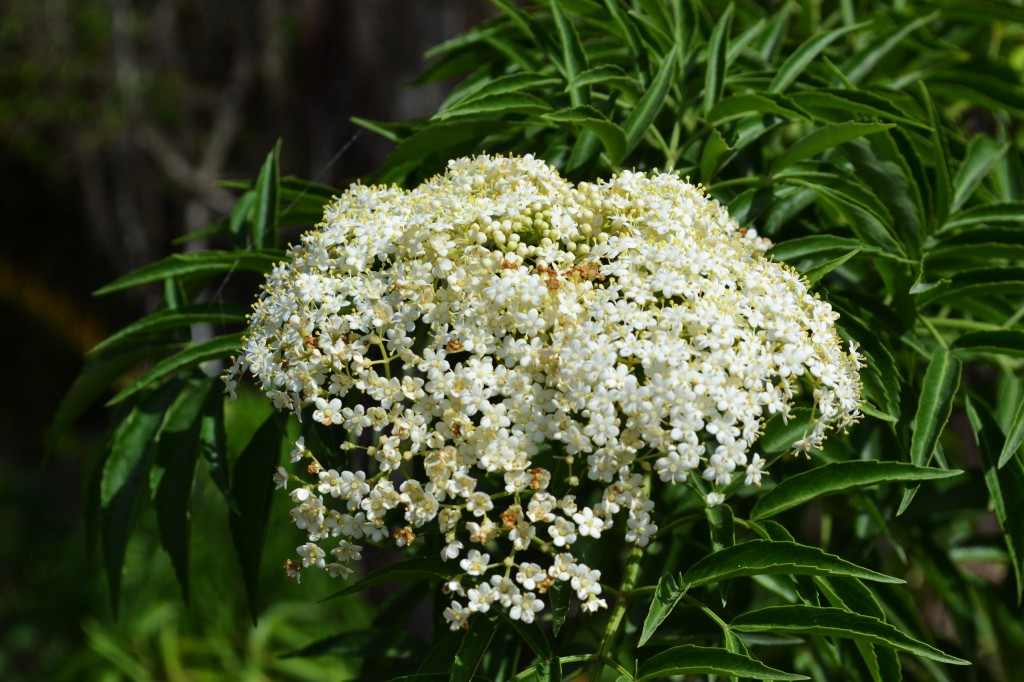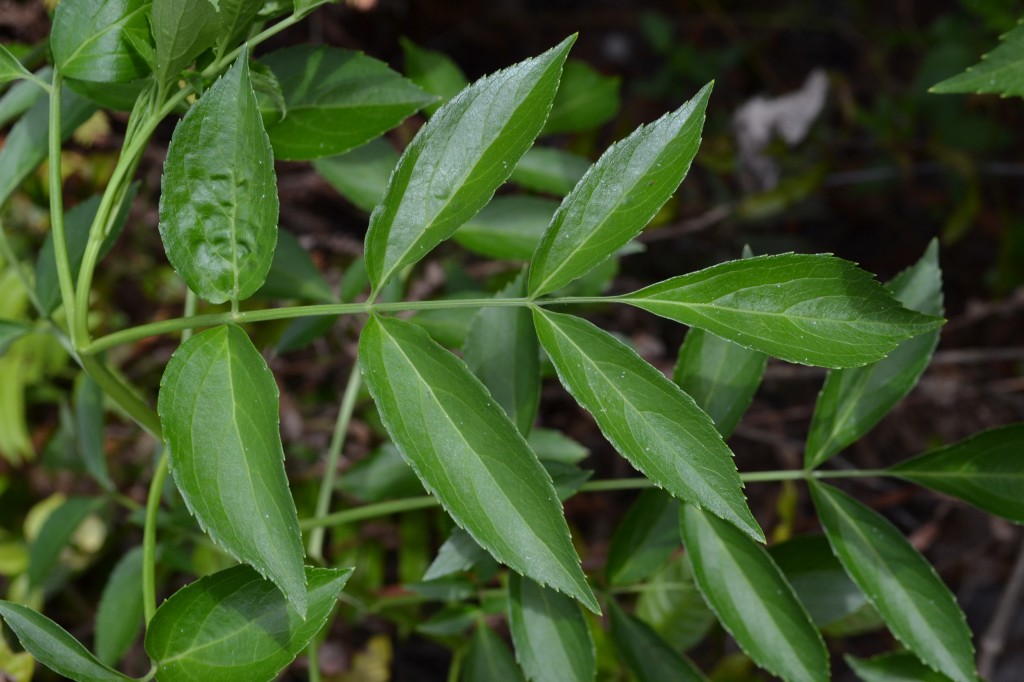Elderberry
Sambucus canadensis
Plant Family: Adoxaceae
Leaves: Opposite, usually once- compound, with 5 – 7 elliptic, toothed leaflets, sometimes twice-compound.
Bark: Brown to gray, with knobby lenticels on younger branches, furrowed on older trunks.
Flowers: White, with 5 petals, individually small, but held in large rounded or flat-topped showy clusters at the branch ends; found in late winter to spring in south Florida, late spring further north in its range.
Fruits: Purple drupes in heavy clusters that are used to make jams and wines; seen in summer.
Habitat: Elderberry will be found in wet hammocks and along watercourses where it tends to form thickets.
Growth Form: Shrub to small tree.
Similar Species: Yellow Elder (Tecoma stans) is a non-native that sometimes naturalizes; it has similar leaves but has yellow bell-shaped flowers and the fruits are long, thin, legume-like pods.
Comments: Elderberry is an important food plant for birds and other wildlife. It is common in wet habitats throughout the eastern U.S. and north into southern Canada
.


